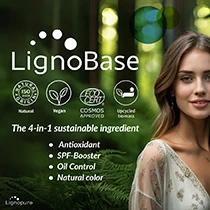Policies toward full replacement of animal testing underway as ECHA sees “significant uptake” of alternatives

02 Jun 2023 --- The European Chemicals Agency (ECHA) has published its fifth report on the use of alternatives to testing on animals for the REACH (Registration, Evaluation, Authorisation and Restriction of Chemicals) Regulation. It finds that in vitro non-animal tests have had a “significant uptake” as alternatives are used to gather substance data.
“The report shows that alternatives to animal testing are widely used when assessing the safety of chemical substances and further progress is being made recently. We are committed to continuing to promote alternatives by contributing to the scientific debate and regulatory work to replace animal testing in the long term,” comments Ofelia Bercaru, director of Prioritisation at ECHA.
“We are cooperating with the European Commission (EC) and other partners to support the development of policies that accelerate the pace for transition toward full replacement of animal testing.”
ECHA clarifies that under the REACH regulation, testing on vertebrate animals is only permitted as a last resort. The agency promotes non-animal testing methods and alternatives.
Furthermore, the report provides an overview of alternative methods and testing strategies used for all 12,439 registered chemicals in the EU up until July 31, 2022. It also brings to light opportunities and challenges of moving away from animal testing in assessing chemicals.
Popular alternative methods Under the REACH regulation, testing on vertebrate animals is only permitted as a last resort.The new report finds that the most common testing method is read-across. This method uses existing data on other similarly structured substances using computer models (QSAR) to determine the properties of a new substance that lacks information, thereby reducing the need to test it further.
Under the REACH regulation, testing on vertebrate animals is only permitted as a last resort.The new report finds that the most common testing method is read-across. This method uses existing data on other similarly structured substances using computer models (QSAR) to determine the properties of a new substance that lacks information, thereby reducing the need to test it further.
Moreover, increasing in vitro test methods involves studies using cells, tissues or organs. These are used to test skin corrosion or irritation, serious eye damage or irritation and skin sensitization.
“Around 50% of the studies conducted between 1990 and 2022 for skin and eye irritation have been performed in vitro. For new studies conducted in 2019 to 2022, this percentage rises to approximately 90%,” shares ECHA.
However, the agency reports that more data is generated through animal testing to investigate long-term effects compared to three years ago. “This is mainly due to the requests made under compliance checks for further testing when non-compliant adaptations were provided,” explains ECHA.
Nonetheless, when it is possible, new studies aimed at investigating long-term effects are increasingly performed via combined testing to reduce animal testing. “For example, repeated dose toxicity tests are increasingly combined with toxicity to reproduction screening,” shares the agency.
ECHA sends reports on how alternative methods have been used to generate information on the properties and risk assessment of chemical substances to the EC every three years.
New methods and policy changes Scientific effort and policy advancements are required to progress toward an animal-testing free future.
Scientific effort and policy advancements are required to progress toward an animal-testing free future.
ECHA states that replacing animal testing is “highly relevant” in the policy context for changes in the future. It facilitates the R&D on New Approach Methodologies (NAM) by making registration data readily available to the broader regulatory and scientific community.
“We stepped up efforts to contribute to the scientific debate while continuing to implement the regulatory frameworks adopted by the legislator. NAM currently represents a priority area for ECHA,” it shares.
“We provide access to crucial data required for their development. To support this process, ECHA is rebuilding its public dissemination system with a focus on facilitating the re-use of data.”
The agency recently held a workshop on May 31 and June 1 on NAM’s long and short-term achievements. “Concerted efforts by all stakeholders are needed for faster progress, and we are ready to play our part,” says Bercaru.
In the shift toward policy development, ECHA outlines two key questions that must be addressed. “How a new approach can cover the most relevant (adverse) effects and diseases of concern for society (for example, carcinogenicity, mutagenicity, reproductive toxicity, immunotoxicity, endocrine disruption, etc.).”
“And how to ensure a similar or better level of protection for human health and the environment. Such fundamental changes ultimately represent policy options, it states.
The current regulatory system aims to protect human health and the environment while ensuring that animal testing is done as a last resort. However, stakeholders and policymakers know the expectations to accelerate the pace of replacing animal testing.
The European Citizens’ Initiative to ban animal testing closed last September with 1.2 million signatures demanding an end to animal testing – prompting the EC to take action.
ECHA claims it has the competence and is ready to support policymakers to develop approaches to regulate chemicals based on NAM and eventually phase out animal testing.
Animal testing in spotlight Ofelia Bercaru.
Ofelia Bercaru.
PersonalCareInsights was present at last year’s annual conference of the European Partnership for Alternative Approaches to Animal Testing. Here key personal care representatives gathered to discuss the achievements and challenges in transitioning toward an animal-testing-free future, along with academics and EC regulatory members.
We also looked at the emergence of non-animal testing methods and the barriers to their uptake. PersonalCareInsights considered arguments from regulators that still view animal tests as necessary for human safety.
Also, more than 35 cosmetics manufacturers and suppliers, industry associations and animal protection organizations linked up to launch the International Collaboration on Cosmetics Safety. We also spoke to Erin Hill, president and CEO at the organization.
Despite the progress of the EU effort to phase out animal testing, we looked at various loopholes that unknowingly cause consumers to purchase products that have been tested on animals.
In R&D, UK researchers recently created “natural but cruelty-free” scents using microbes rather than animal and plant sources.
By Venya Patel












